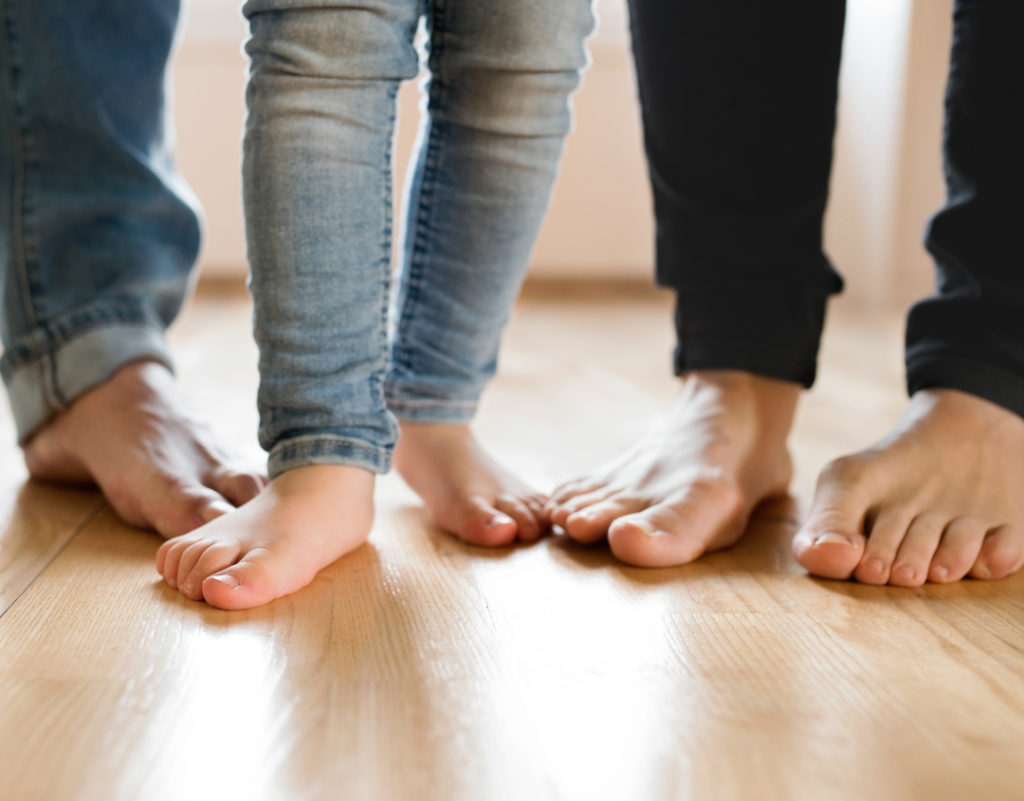When you’ve got foot pain, many people will try anything that promises to get rid…
Bare Feet And Heel Pain

Heel pain, whether it bothers you as you take your first steps in the morning, after sitting down for a long time, or if it’s gradually getting worse and travelling through the arch of your foot, can make it difficult to stand or walk, and really get in the way of your everyday activities. But could it be linked to one simple factor – walking barefoot?
Heel pain is one of the most common foot problems seen by our podiatrists. For many, it may be because they’re spending a lot more time at home than they used to – more people are now working remotely, or going into the office less often. And while you’re at home, you may not be wearing shoes or supportive slippers around the house, and instead walking with bare feet or wearing thin socks.
Unfortunately, taking away a familiar source of supportive footwear and going barefoot on hard surfaces can lead to issues with heel pain over time, including overuse injuries like plantar fasciitis.
The Connection Between Bare Feet And Heel Pain
It may seem counterintuitive that going barefoot is connected to foot pain, when you consider that we’re naturally born without shoes, and humans have been walking on the earth for millennia – we’ve been around for much longer than shoes have. However, our walking environments have changed, and our feet can struggle to get through the daily grind while supporting your body on hard, artificial surfaces.
Historically, the natural ground surfaces we walked on such as grass, dirt, sand and clay had natural shock absorbing qualities that made it easier on our feet. In contrast, many homes now have floors that are hard and flat, made from materials such as wood, tile, linoleum, or even concrete. Over time, walking barefoot and subjecting your feet to these surfaces without any shock absorption, means that your heels and arches take the majority of these impact forces with each step.
In many cases, after a few days or weeks without support, the feet and arches can become fatigued. The tissues like the plantar fascia can also become strained at the point that it connects at the heel, which can trigger heel pain.
If you happen to have any pre-existing structural issues with your feet, such as flat arches, these impact forces from walking barefoot over hard surfaces can be magnified even further, combining the impacts of both internal biological factors and environmental factors. So, if you’ve struggled with other issues with your feet including heel pain before, you may be more likely to develop heel pain from barefoot walking as well.
What Should I Do If I’m Struggling With Heel Pain?
If you’re experiencing heel pain, we recommend wearing supportive shoes indoors, even if it’s only for part of the day, especially on hard floors. Look for sandals and slippers with arch support, and stretch your feet daily to help with tension in the internal structures within your feet.
What If My Heel Pain Still Won’t Go Away?
We recommend making an appointment with one of your podiatrists if you are experiencing heel pain, as this can be caused by a wide range of different factors, which all require different forms of treatment. If examined and diagnosed early, simple and non-invasive treatment options such as wearing supportive shoes, and custom-fitted orthotic insoles can manage this condition with a high rate of success.
If you are experiencing heel pain, contact one of our team members today.
